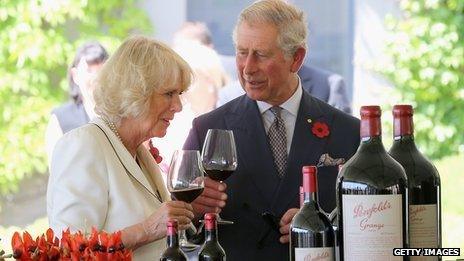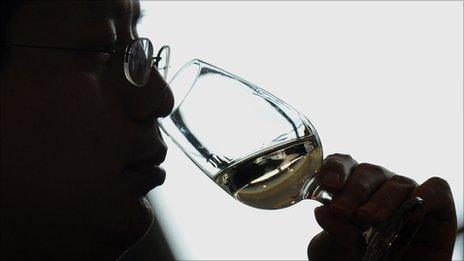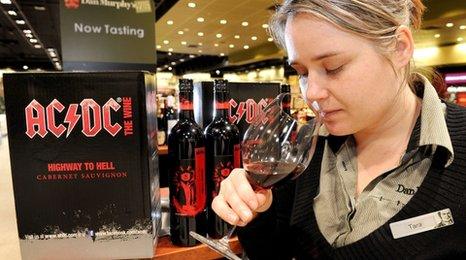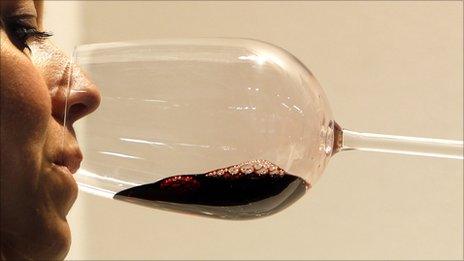Australia's Treasury Wines Estates in bidding war
- Published

TWE is the firm behind Australia's most recognised winemaker, Penfolds
The world's biggest listed winemaker, Australia's Treasury Wine Estates (TWE), has received , externala second multi-billion-dollar takeover bid for its business.
The offer is worth A$3.4bn (£1.88bn; $3.17bn) and has come from an as-yet unnamed global private equity firm.
Earlier this month, the US private equity giant KKR launched a renewed bid for the winemaker.
TWE owns brands such as Wolf Blass, Rosemount and Lindeman's.
It is also behind Australia's most recognised winemaker, Penfolds.
The second investor to make a bid for the winemaker has requested that its identity remain confidential for the moment.
KKR's bid earlier this month is a joint venture with fellow US private equity firm Rhone Group.
Why the interest?
TWE has a turbulent history and is currently undergoing restructuring that will see 175 job cuts.
Last year, the firm sold 385 million bottles and recorded revenues of A$1.76bn.
"It has been closely watched by private equity firms since it was spun out from Fosters group in 2011," said market strategist Evan Lucas at IG Markets in Melbourne.
"Drinking habits globally have also seen wine moving up the list in liquor consumption, while brands such as Penfolds and Seppelt demand premium on the global stage.
"And that is where private equity firms see value," he said.

TWE was formed in 1995 as the wine division of Australia's Foster's group
In June last year, the group was forced to destroy A$34m worth of unsellable wine.
The move was a result of disappointing sales in the US, where domestic crops performed well and where wine does not demand the premium price it does in Asia.
The firm has also seen disappointing results in Australia, with falling volumes domestically and lower-than-expected sales in China amid the government's austerity drive there.
But Mr Lucas said the mainland remained a strong market for Australian and New Zealand wine and that markets including Japan and South Korea would help offset any slowdown in China.
"The wine industry continues to see growth despite global downturns," he said.
"Drinking habits in Asia have continued to drive demand for Australian and New Zealand wines, plus both countries still derive most of their earnings from the domestic market, which remains a constant for the bottom line."
- Published4 August 2014

- Published18 September 2011

- Published16 August 2011

- Published14 April 2011
